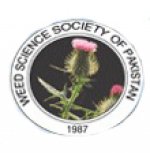Evaluation of Genetic Variability and Yellow Rust in Selected Wheat Lines
Evaluation of Genetic Variability and Yellow Rust in Selected Wheat Lines
Muhammad Sadiq1, Nadia1, Abdur Rauf1*, Khilwat Afridi2, Muhammad Qayash1, Saman Yaqub1, Kashmala Jabbar1, Guleena Khan1, Ikramullah Khan1, Adeel Khan1, Tahseen Ullah1, Tanweer Kumar3, Muhammad Arif3, Muhammad Ismail3 and Muntaha Munir4
ABSTRACT
Genetically diverse wheat genotypes are one of the major sources of variation that contribute to addressing climate change-related challenges, including both biotic and abiotic stresses. The F3 wheat populations were evaluated for genetic variability, heritability, and their association with yellow rust and morpho-yield-related traits in a Complete Randomized Block Design (RCBD). The variance analysis revealed significant genetic variability in all traits, although some parameters, such as days to maturity, grain yield, and 1000-grain weight, did not show substantial genetic variation. Moreover, Khattakwal (landrace) demonstrated maximum mean performance for different traits i.e., spikelets per spike (20.4), spike length (14 cm), and biological yield (48.3 g), while the parental lines (Fateh Jang-16, KT-06, YR-10, and YR- 5) showed full resistivity against the yellow rust. However, in the F3 wheat population and parental/lines broad sense heritability was high i.e., 96% for yellow rust followed by days to heading (95%). It is concluded that the selection for improvement in these parameters should be made in the early generation. Moreover, high PCV (Phenotypic Coefficient of Variance) and GCV (Genotypic Coefficients of Variance) values were observed for yellow rust (98.11 and 96.34). In correlation analysis, grain yield was significantly positively correlated with all parameters except yellow rust, tillers per plant, and days to maturity. Yellow rust was negatively correlated to all parameters except plant height, days to maturity, and spike length. The genotypes YR-5, Fateh Jung-16×YR-5, and PR-128× YR-5 showed maximum grain yield and high resistivity. Therefore, these genotypes are recommended for further evaluation and could be used in future breeding programs.
To share on other social networks, click on any share button. What are these?





